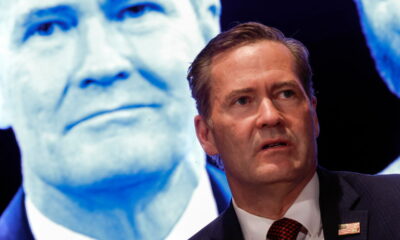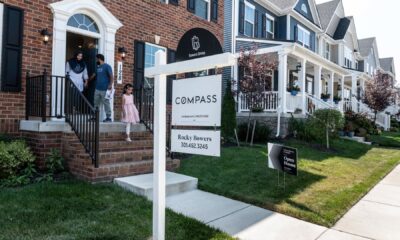Chairman Jason Smith (R-MO) speaks during a House Committee on Ways and Means in the Longworth House Office Building on April 30, 2024 in Washington, D.C.
Anna Moneymaker | Getty Images News | Getty Images
House Republicans are calling for a higher limit on the deduction for state and local taxes, known as SALT, as part of President Donald Trump‘s tax and spending package.
The House Ways and Means Committee, which oversees tax, released the full text of its portion of the bill on Monday afternoon. The SALT provision would raise the cap to $30,000 for those with a modified adjusted gross income of $400,000 or less.
However, the SALT deduction limit has been a sticking point in tax bill negotiations and the provision could still change significantly. The committee is scheduled to debate and vote on the legislation on Tuesday afternoon.
More from Personal Finance:
Trump’s tax cuts: The key issues and who stands to benefit
Changes for Social Security beneficiaries to monitor under new agency leadership
With foreign tourists boycotting the U.S., businesses brace for falling sales
Enacted via the Tax Cuts and Jobs Act, or TCJA, of 2017, there’s a $10,000 limit on the federal deduction on state and local taxes, known as SALT, which will sunset after 2025 without action from Congress.
Currently, if you itemize tax breaks, you can’t deduct more than $10,000 in levies paid to state and local governments, including income and property taxes.
Raising the SALT cap has been a priority for certain lawmakers from high-tax states like California, New Jersey and New York. With a slim House Republican majority, those voices could impact negotiations.
While Trump enacted the $10,000 SALT cap in 2017, he reversed his position on the campaign trail last year, vowing to “get SALT back” if elected again. He has renewed calls for reform since being sworn into office.
Lawmakers have floated several updates, including a complete repeal, which seems unlikely with a tight budget and several competing priorities, experts say.
“It all has to come together in the context of the broader package,” but a higher SALT deduction limit could be possible, Garrett Watson, director of policy analysis at the Tax Foundation, told CNBC earlier this month.
Here’s who could be impacted.
How to claim the SALT deduction
When filing taxes, you choose the greater of the standard deduction or your itemized deductions, including SALT capped at $10,000, medical expenses above 7.5% of your adjusted gross income, charitable gifts and others.
Starting in 2018, the Tax Cuts and Jobs Act doubled the standard deduction, and it adjusts for inflation yearly. For 2025, the standard deduction is $15,000 for single filers and $30,000 for married couples filing jointly.
Because of the high threshold, the vast majority of filers — roughly 90%, according to the latest IRS data — use the standard deduction and don’t benefit from itemized tax breaks.
Typically, itemized deductions increase with income, and higher earners tend to owe more in state income and property taxes, according to Watson.
Who benefits from a higher SALT limit
Generally, higher earners would benefit most from raising the SALT deduction limit, experts say.
For example, an earlier proposal, which would remove the “marriage penalty” in federal income taxes, involves increasing the cap on the SALT deduction for married couples filing jointly from $10,000 to $20,000.
That would offer almost all the tax break to households making more than $200,000 per year, according to a January analysis from the Tax Policy Center.
“If you raise the cap, the people who benefit the most are going to be upper-middle income,” said Howard Gleckman, senior fellow at the Urban-Brookings Tax Policy Center.
Of course, upper-middle income looks different depending on where you live, he said.
Forty of the top 50 U.S. congressional districts impacted by the SALT limit are in California, Illinois, New Jersey or New York, a Bipartisan Policy Center analysis from before 2022 redistricting found.
If lawmakers repealed the cap completely, households making $430,000 or more would see nearly three-quarters of the benefit, according to a separate Tax Policy Center analysis from September.


 Finance1 week ago
Finance1 week ago
 Finance1 week ago
Finance1 week ago
 Accounting1 week ago
Accounting1 week ago
 Economics1 week ago
Economics1 week ago
 Personal Finance5 days ago
Personal Finance5 days ago
 Personal Finance3 days ago
Personal Finance3 days ago
 Economics1 week ago
Economics1 week ago
 Personal Finance5 days ago
Personal Finance5 days ago












